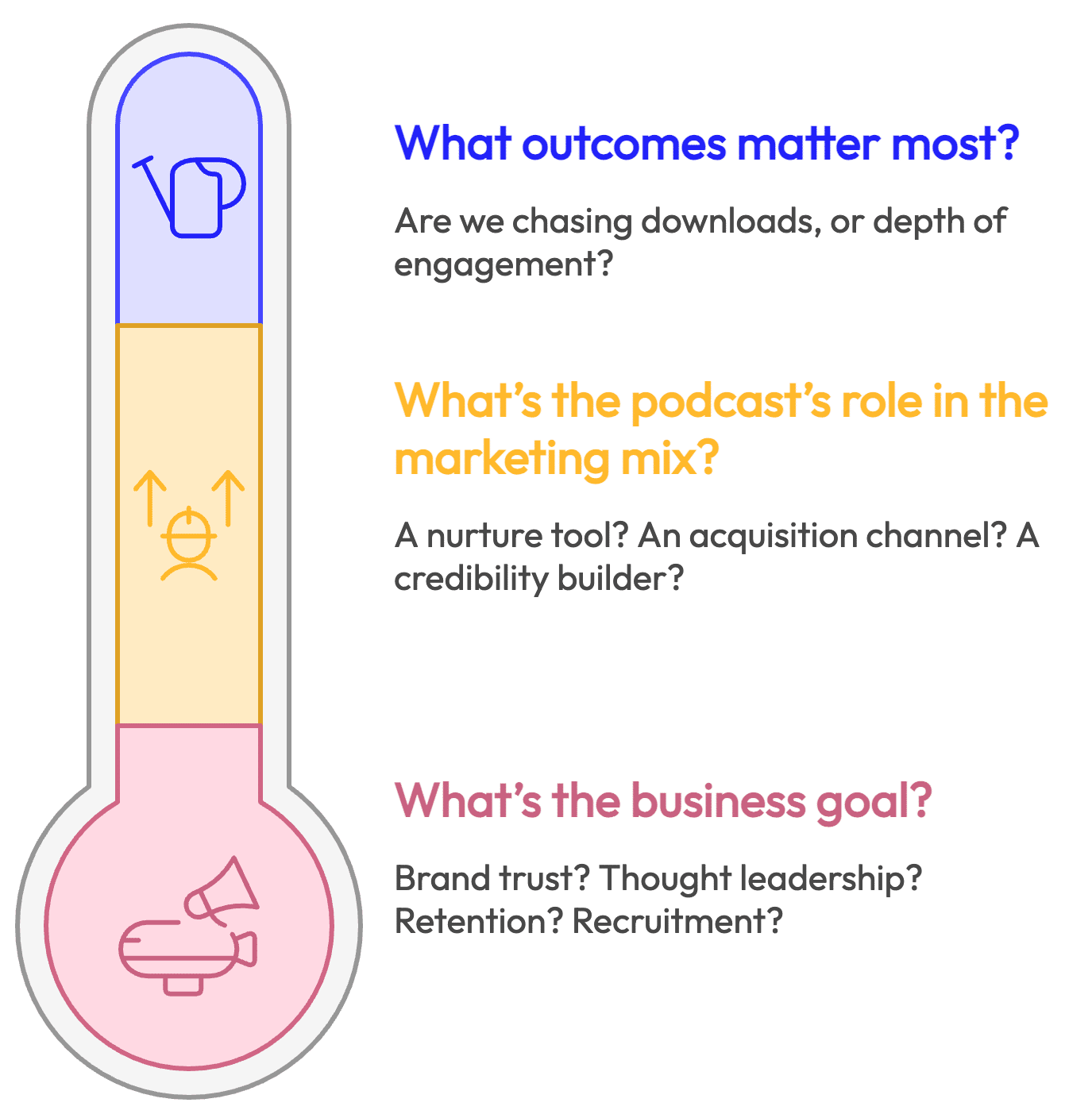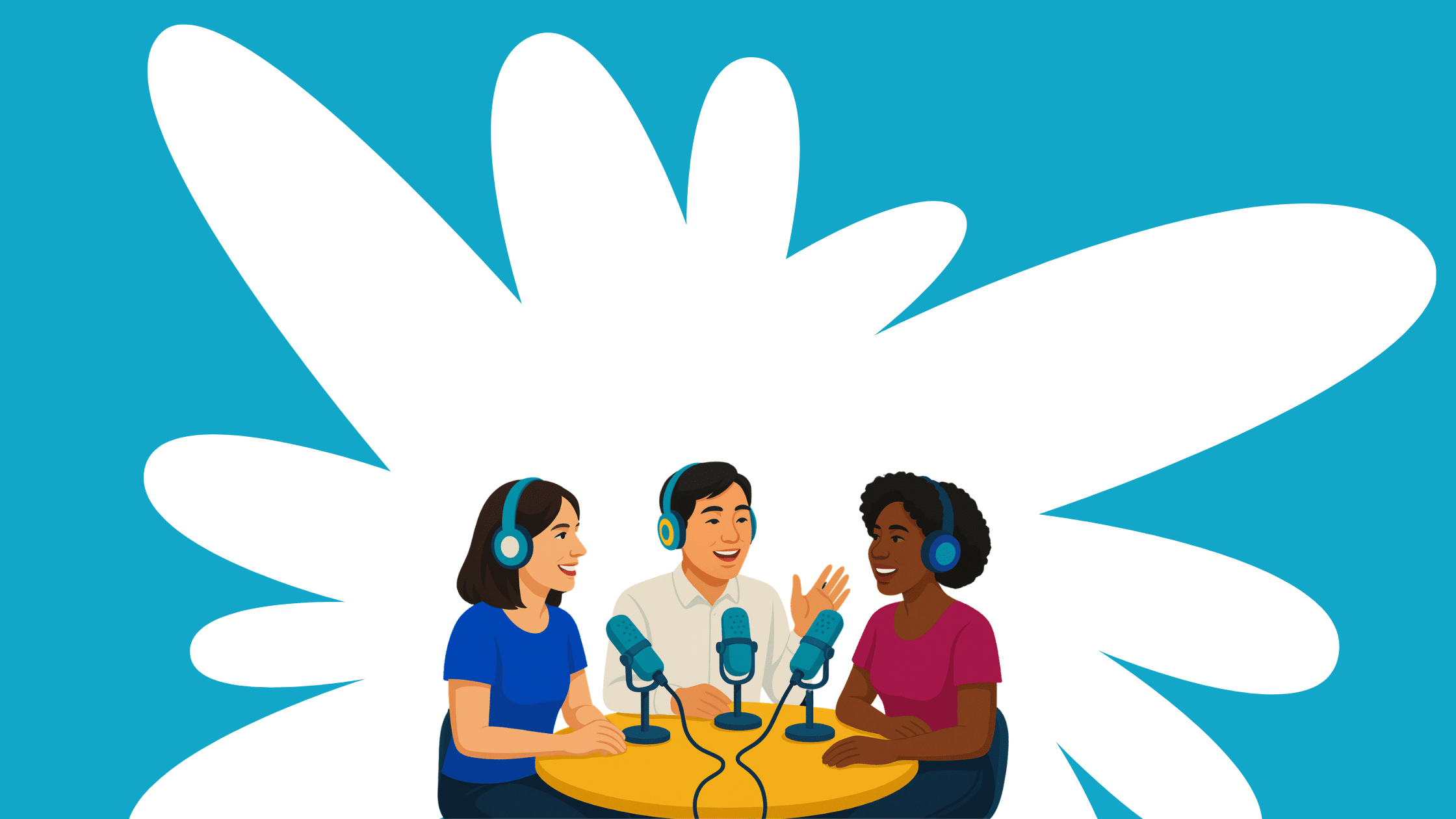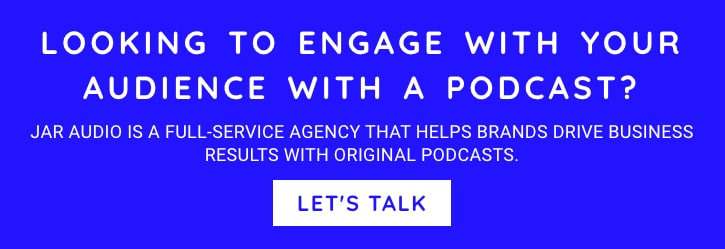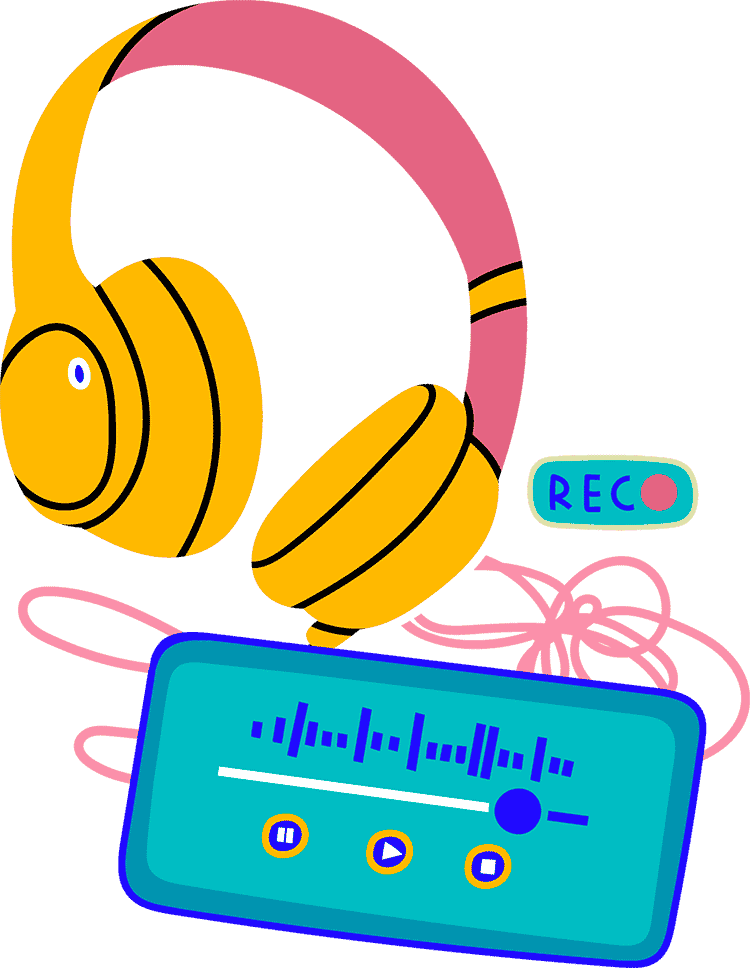If your branded podcast still leads with product messaging, it’s not strategy — it’s a monologue. Here’s how to flip the mic.
I can’t count how many times I’ve heard this from CMOs:
“We want to build trust, not just awareness. We want to lead conversations, not just pitch.”
Great. So why does the podcast content still sound like a long brochure?
Here’s the problem: most branded podcast strategies still start with “what do we want to say?” instead of “who are we really talking to — and what do they care about?”
That disconnect is where podcast growth goes to die.
The solution is to start building your show around listener personas — and not the kind pulled from a pitch deck.
The real reason podcasts stall: Brand-first thinking
We see it all the time at JAR.
A brand launches a show with a strong host, great production quality, a great name, and great guests. But six episodes in? The data flatlines. Retention drops. Marketing starts pulling back on promotion. Everyone quietly wonders if podcasts “just don’t work for us.”
But the problem isn’t the medium. It’s the method.
If your podcast audience development plan doesn’t start with deep listener insight, you’re building for yourself — not for the people you claim to serve. That leads to broad, safe content that might sound professional… but doesn’t get played twice.
And it certainly doesn’t drive ROI, brand lift, or the kind of emotional resonance that turns passive listeners into active brand advocates.
What podcast listener personas are (and what they’re not)
Podcast listener personas aren’t just marketing personas with earbuds.
Marketing personas focus on buying behavior: demographics, purchase triggers, objections. Useful, but surface-level.
Listener personas go deeper. They help you understand:
- When and how someone listens (commute? workout? weekends?)
- What they skip — and what they replay
- Who they trust
- What problems they’re trying to solve, and why they’d care about your take
These are the insights that shape the content, tone, guests, and delivery of your show.
That’s why they’re essential to any smart branded podcast strategy. Because without them, you’re just guessing.
Meet Linda and Dr. Sophie: Real personas, real strategy
At JAR, we developed a show with a healthcare client — it focuses on a niche topic, but one with high-stakes impact. To ensure this podcast would land with the right audience, we built it around two primary personas:
Linda, the Nurse Educator (Core audience)
- Age: 30
- Listening habits: Commutes and workouts
- Content preference: Practical, no-fluff episodes with emotional insight
- Pain points: Burnout, compliance overload, team morale
- Goal: Equip her peers with tools to educate, cope, and thrive
Linda is a multitasker. She doesn’t have time for 60-minute TED-style lectures. She needs concise, applicable content with heart. When she finds it, she shares it — especially if it helps her team.
Dr. Sophie, the Chief Nursing Officer (Adjacent audience)
- Age: 40
- Listening habits: Morning walks, baking
- Content preference: Data-backed insights, leadership strategy, research-meets-reality
- Pain points: Implementing best practices at scale
- Goal: Influence, lead, and support her nursing team
Dr. Sophie is the kind of listener who bookmarks podcast episodes to cite in meetings. She wants thought-provoking takes, not brand monologues. She’s analytical — but values storytelling that moves people, not just charts.
By designing the show around Linda and Sophie, we ensured every creative and strategic decision — down to episode length — was anchored in audience empathy.
How did we get to Linda and Dr. Sophie?
Because personas like these aren’t imaginary — they’re built from real insight.
Here’s our proven process for developing effective podcast listener personas that fuel growth.
Step 1: Clarify the job the podcast needs to do
Before we even ask who the show is for, we define:

- What’s the business goal?
- Brand trust? Thought leadership? Retention? Recruitment?
- What’s the podcast’s role in the marketing mix?
- A nurture tool? An acquisition channel? A credibility builder?
- What outcomes matter most?
- Are we chasing downloads, or depth of engagement?
Your persona must reflect who the podcast needs to move — and why.
Example: If the podcast’s job is to attract nursing talent, your persona can’t just be a generic “healthcare professional.” It needs to zero in on the right title, context, and listening behavior.
Step 2: Identify the core and adjacent audiences
We bucket audiences into two groups:
- Core: The primary listener the show must engage
- Adjacent: Secondary listeners who influence, amplify, or support the core audience
For the healthcare show:
- Core = Linda, the Nurse Educator
- Adjacent = Dr. Sophie, the CNO
Both matter. But only one drives the creative decisions.
Step 3: Mix data and discovery
This is where the personas take shape.
- Quantitative data
- Spotify + Apple Podcasts analytics
- Host server data: device type, geography, retention rates
- Website behavior + email analytics
- Existing content performance
- Qualitative insight
- Stakeholder interviews (sales, CX, clinical leaders)
- Mini-audience surveys (what do you listen to and why?)
- Peer network observations (Sermo, LinkedIn, forums)
- Social + competitive listening
- Review sections of similar podcasts
- Twitter/LinkedIn discussions
- What gets shared, quoted, or skipped?
Step 4: Build personas that work
A useful persona includes:
- Name, role, age, location
Goals and motivations - Pain points and blockers
- Listening/viewing behavior (when, how, and where)
Content preferences (length, tone, guest types) - Media habits (platforms, networks, trusted voices)
And most importantly:
A litmus test: Would this persona hit play on this episode — and finish it?
Step 5: Iterate quarterly
Personas aren’t one-and-done. They evolve as your show does.
We help clients refine them every 6 months (which is usually the end of a season) based on:
- New listener behavior
- Feedback and reviews
- Business goal shifts
How listener personas shape a winning branded podcast strategy
Personas aren’t just for planning. They’re tools for every stage of podcast development, production, and promotion.
1. Smarter content mapping
Every episode should do a job. With clear personas, you can:
- Choose topics that align with real-world challenges, not brand talking points
- Design episode structures that match listening contexts (e.g., 20-minute commutes vs. 5-minute snackables)
- Build editorial calendars that reflect seasonal patterns or stress points in your listener’s life or work
We used this approach with Genome BC, designing episodes that balanced public education with insider credibility — because their core persona cared about both.
2. More resonant guest curation
Let’s be blunt: “big name” guests aren’t always the best fit.
What your listener personas want are relatable, relevant, and respected voices. The kind who’ve lived the challenges your audience faces.
For Linda, that might be a frontline nurse manager. For Sophie, a peer-level health system leader. One gives ground-level insight. The other brings vision and credibility.
3. Targeted distribution and promotion
If you know where your listeners hang out — digitally and physically — you’ll stop wasting budget promoting your show in the wrong places.
- Linda might discover episodes through peer shares on LinkedIn
- Sophie may find it via Sermo, or professional networks
- Both might encounter clips promoted around key industry conferences
This is what podcast audience development looks like when it’s grounded in insight: efficient, precise, and outcome-driven.
4. Better measurement and optimization
Success isn’t just about downloads. With personas, you can track:
- Listener retention across specific segments
- Episode sharing behavior among target roles
- Social and community mentions in the spaces your personas frequent
- Specific calls to action that resonate (e.g., “share with your team” vs. “download our white paper”)
We’ve helped clients evolve their KPIs from vanity metrics to value metrics — because if Linda finishes 90% of an episode and shares it with her unit, that’s a win. Even if it’s “only” 300 listeners.
Podcast growth tactics that work (when you know who you’re talking to)
Great growth tactics don’t exist in a vacuum. They work because they’re tied to a clear audience strategy. Here are a few we use and recommend — always guided by personas:
The “One Episode, One Job” framework
Design each episode to do one thing well: inspire, educate, challenge, or clarify. Trying to do all four? You’ll do none.
Repurpose by persona
Take a 20-minute episode and slice it into:
- A 60-second takeaway for Linda on LinkedIn
- A 5-minute “Leadership Clip” for Sophie’s inbox
- A quote card for Twitter that tags the guest (and earns resharing)
Ask for feedback (and actually use it)
Run post-episode polls or micro-surveys. Ask:
- “Was this helpful in your day-to-day?”
- “What’s one thing we should do better?”
Use this to evolve your personas. Because your audience changes. Your strategy should too.
Why listener personas are a strategic advantage (not a creative constraint)
Let’s address a fear I hear from content teams:
“If we narrow too much, won’t we lose potential listeners?”
Actually, the opposite is true.
Narrow builds loyalty. Loyalty builds word of mouth. Word of mouth builds growth.
A podcast that tries to please everyone pleases no one. But a show that speaks directly to someone like Linda? She remembers it. She subscribes. She shares it in her staff meeting. And she comes back next week.
That’s how you turn a podcast from “content” into brand equity.
Ready to build a show that listens back?
Whether you’re launching a new show or looking to optimize an existing one, don’t skip the most important step:
Know who you’re building for. Then build like they matter.
That’s how you create a show that does the job it’s meant to do — connect, convert, and grow.
We share the best stuff we’ve learned about podcast audience development, storytelling strategy, and how to make your show work as hard as your best salesperson.
No fluff. Just insight.
Roger transitioned from a 22 year career in advertising account management to co-founding JAR, a podcast podcast production agency. As CEO of JAR, he propels the company’s growth by prioritizing audience engagement and podcast marketing. Under his guidance, JAR flourishes with a global clientele, aiming to broaden its reach across North America and revolutionize brand connections through immersive storytelling.



